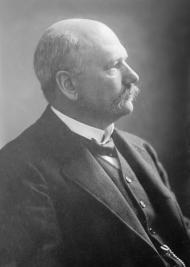Television experiments
The development of television was the result of work by many inventors. Among them, Baird was a prominent pioneer and made major advances in the field. Particularly in Britain, many historians credit Baird with being the first to produce a live, moving, greyscale television image from reflected light. Baird achieved this, where other inventors had failed, by obtaining a better photoelectric cell and improving the signal conditioning from the photocell and the video amplifier.
Between 1902 and 1907, Arthur Korn invented and built the first successful signal-conditioning circuits for image transmission. The circuits overcame the image-destroying lag effect that is part of selenium photocells. Korn's compensation circuit allowed him to send still pictures by telephone or wireless between countries and even over oceans, while his circuit operated without benefit of electronic amplification. Korn's success at transmitting halftone still images suggested that such compensation circuits might work in television. Baird was the direct beneficiary of Korn's research and success.
In his first attempts to develop a working television system, Baird experimented with the Nipkow disk. Paul Nipkow had invented this scanning disc system in 1884. Television historian Albert Abramson calls Nipkow's patent "the master television patent". Nipkow's work is important because Baird and many others chose to develop it into a broadcast medium.
In early 1923, and in poor health, Baird moved to 21 Linton Crescent, Hastings, on the south coast of England and later rented a workshop in Queen's Arcade in the town. Baird built what was to become the world's first working television set using items including an old hatbox and a pair of scissors, some darning needles, a few bicycle light lenses, a used tea chest, and sealing wax and glue that he purchased. In February 1924, he demonstrated to the Radio Times that a semi-mechanical analogue television system was possible by transmitting moving silhouette images. In July of the same year, he received a 1000-volt electric shock, but survived with only a burnt hand. His landlord, Mr Tree, asked him to quit his workshop and he moved to upstairs rooms in Soho, London, where he made a technical breakthrough. Baird gave the first public demonstration of moving silhouette images by television at Selfridges department store in London in a three-week series of demonstrations beginning on 25 March 1925.
In his laboratory on 2 October 1925, Baird successfully transmitted the first television picture with a greyscale image: the head of a ventriloquist's dummy nicknamed "Stooky Bill" in a 30-line vertically scanned image, at five pictures per second. Baird went downstairs and fetched an office worker, 20-year-old William Edward Taynton, to see what a human face would look like, and Taynton became the first person to be televised in a full tonal range. Looking for publicity, Baird visited the Daily Express newspaper to promote his invention. The news editor was terrified: he was quoted by one of his staff as saying: "For God's sake, go down to reception and get rid of a lunatic who's down there. He says he's got a machine for seeing by wireless! Watch him — he may have a razor on him."

